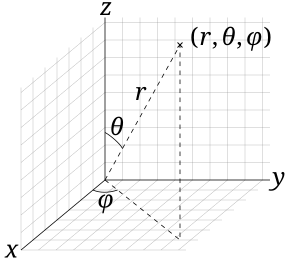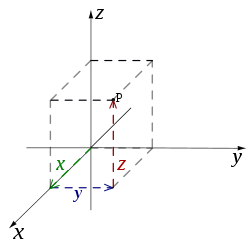A Galaxy is a coordinate system. However, what lies beyond all galaxies is not. (At least not yet). So, though Dark Matter and Dark Fluid also exists within Galaxies, people as of yet don't know quite how to define it even though 96% of the known universe is composed of Dark Matter and Dark Fluid. (Dark meaning in this case only (Unknown)). So, one of the primary quests today is to find and to define Dark matter and dark fluid because even though scientists know it is 96% of the known universe they cannot define it or even find it properly yet.
However, I'm thinking Dark matter and Dark Fluid are not capable of being defined as matter at all because they are neither matter nor antimatter but might contain both without SpaceTime which would be why people cannot define it because it doesn't exist in the matter or anti-matter realm but still exists possibly dimensionally anyway. So, defining exactly what that dimension is without Space Time or Gravity is difficult for people still living on earth. Likely you would need to send a probe beyond the Galaxy to do this more effectively. However, even then what you design the probe to do?
Coordinate system
From Wikipedia, the free encyclopedia
"Coordinate" redirects here. For other uses, see Coordinate (disambiguation).
The spherical coordinate system is commonly used in physics. It assigns three numbers (known as coordinates) to every point in Euclidean space: radial distance r, polar angle θ (theta), and azimuthal angle φ (phi). The symbol ρ (rho) is often used instead of r.
Contents
Common coordinate systems
Number line
Main article: Number line
The simplest example of a coordinate system is the identification of points on a line with real numbers using the number line. In this system, an arbitrary point O (the origin) is chosen on a given line. The coordinate of a point P is defined as the signed distance from O to P, where the signed distance is the distance taken as positive or negative depending on which side of the line P lies. Each point is given a unique coordinate and each real number is the coordinate of a unique point.[4]Cartesian coordinate system
Main article: Cartesian coordinate system
The Cartesian coordinate system in the plane.
Depending on the direction and order of the coordinate axis the system may be a right-hand or a left-hand system. This is one of many coordinate systems.
Polar coordinate system
Main article: Polar coordinate system
Another common coordinate system for the plane is the polar coordinate system.[6] A point is chosen as the pole and a ray from this point is taken as the polar axis.
For a given angle θ, there is a single line through the pole whose
angle with the polar axis is θ (measured counterclockwise from the axis
to the line). Then there is a unique point on this line whose signed
distance from the origin is r for given number r. For a given pair of coordinates (r, θ) there is a single point, but any point is represented by many pairs of coordinates. For example, (r, θ), (r, θ+2π) and (−r, θ+π) are all polar coordinates for the same point. The pole is represented by (0, θ) for any value of θ.Cylindrical and spherical coordinate systems
Main articles: Cylindrical coordinate system and Spherical coordinate system
There are two common methods for extending the polar coordinate system to three dimensions. In the cylindrical coordinate system, a z-coordinate with the same meaning as in Cartesian coordinates is added to the r and θ polar coordinates giving a triple (ρ, φ, z).[7] Spherical coordinates take this a step further by converting the pair of cylindrical coordinates (r, z) to polar coordinates (ρ, φ) giving a triple (ρ, θ, φ).[8]Homogeneous coordinate system
Main article: Homogeneous coordinates
A point in the plane may be represented in homogeneous coordinates by a triple (x, y, z) where x/z and y/z are the Cartesian coordinates of the point.[9]
This introduces an "extra" coordinate since only two are needed to
specify a point on the plane, but this system is useful in that it
represents any point on the projective plane without the use of infinity.
In general, a homogeneous coordinate system is one where only the
ratios of the coordinates are significant and not the actual values.Other commonly used systems
Some other common coordinate systems are the following:- Curvilinear coordinates are a generalization of coordinate systems generally; the system is based on the intersection of curves.
- Orthogonal coordinates: coordinate surfaces meet at right angles
- Skew coordinates: coordinate surfaces are not orthogonal
- The log-polar coordinate system represents a point in the plane by the logarithm of the distance from the origin and an angle measured from a reference line intersecting the origin.
- Plücker coordinates are a way of representing lines in 3D Euclidean space using a six-tuple of numbers as homogeneous coordinates.
- Generalized coordinates are used in the Lagrangian treatment of mechanics.
- Canonical coordinates are used in the Hamiltonian treatment of mechanics.
- Parallel coordinates visualise a point in n-dimensional space as a polyline connecting points on n vertical lines.
- Barycentric coordinates as used for ternary plots and more generally in the analysis of triangles.
- Trilinear coordinates are used in the context of triangles.
- The Whewell equation relates arc length and the tangential angle.
- The Cesàro equation relates arc length and curvature.
Coordinates of geometric objects
Coordinates systems are often used to specify the position of a point, but they may also be used to specify the position of more complex figures such as lines, planes, circles or spheres. For example, Plücker coordinates are used to determine the position of a line in space.[10] When there is a need, the type of figure being described is used to distinguish the type of coordinate system, for example the term line coordinates is used for any coordinate system that specifies the position of a line.It may occur that systems of coordinates for two different sets of geometric figures are equivalent in terms of their analysis. An example of this is the systems of homogeneous coordinates for points and lines in the projective plane. The two systems in a case like this are said to be dualistic. Dualistic systems have the property that results from one system can be carried over to the other since these results are only different interpretations of the same analytical result; this is known as the principle of duality.[11]
Transformations
See also: Active and passive transformation
Main article: List of common coordinate transformations
Because there are often many different possible coordinate systems
for describing geometrical figures, it is important to understand how
they are related. Such relations are described by coordinate transformations
which give formulas for the coordinates in one system in terms of the
coordinates in another system. For example, in the plane, if Cartesian
coordinates (x, y) and polar coordinates (r, θ) have the same origin, and the polar axis is the positive x axis, then the coordinate transformation from polar to Cartesian coordinates is given by x = r cosθ and y = r sinθ.With every bijection from the space to itself two coordinate transformations can be associated:
- such that the new coordinates of the image of each point are the same as the old coordinates of the original point (the formulas for the mapping are the inverse of those for the coordinate transformation)
- such that the old coordinates of the image of each point are the same as the new coordinates of the original point (the formulas for the mapping are the same as those for the coordinate transformation)
Coordinate curves and surfaces
Coordinate surfaces in the Spherical coordinate system
In three-dimensional space, if one coordinate is held constant and the other two are allowed to vary, then the resulting surface is called a coordinate surface. For example, the coordinate surfaces obtained by holding ρ constant in the spherical coordinate system are the spheres with center at the origin. In three-dimensional space the intersection of two coordinate surfaces is a coordinate curve.
Similarly, coordinate hypersurfaces are the n-1-dimensional spaces resulting from fixing a single coordinate of an n-dimensional coordinate system.[13]
Coordinate maps
Main article: Manifold
The concept of a coordinate map, or chart is central to
the theory of manifolds. A coordinate map is essentially a coordinate
system for a subset of a given space with the property that each point
has exactly one set of coordinates. More precisely, a coordinate map is a
homeomorphism from an open subset of a space X to an open subset of Rn.[14]
It is often not possible to provide one consistent coordinate system
for an entire space. In this case, a collection of coordinate maps are
put together to form an atlas covering the space. A space equipped with such an atlas is called a manifold
and additional structure can be defined on a manifold if the structure
is consistent where the coordinate maps overlap. For example, a differentiable manifold is a manifold where the change of coordinates from one coordinate map to another is always a differentiable function.Orientation-based coordinates
In geometry and kinematics, coordinate systems are used not only to describe the (linear) position of points, but also to describe the angular position of axes, planes, and rigid bodies.[15] In the latter case, the orientation of a second (typically referred to as "local") coordinate system, fixed to the node, is defined based on the first (typically referred to as "global" or "world" coordinate system). For instance, the orientation of a rigid body can be represented by an orientation matrix, which includes, in its three columns, the Cartesian coordinates of three points. These points are used to define the orientation of the axes of the local system; they are the tips of three unit vectors aligned with those axes.See also
- Absolute angular momentum
- Alpha-numeric grid
- Analytic geometry
- Astronomical coordinate systems
- Axes conventions in engineering
- Coordinate-free
- Fractional coordinates
- Frame of reference
- Galilean transformation
- Geographic coordinate system
- Nomogram, graphical representations of different coordinate systems
- Rotation of axes
- Translation of axes
Relativistic Coordinate Systems
- Eddington–Finkelstein coordinates
- Gaussian polar coordinates
- Gullstrand–Painlevé coordinates
- Isotropic coordinates
- Kruskal–Szekeres coordinates
- Schwarzschild coordinates
|
||||||||||
References
- Hanspeter Schaub, John L. Junkins (2003). "Rigid body kinematics". Analytical Mechanics of Space Systems. American Institute of Aeronautics and Astronautics. p. 71. ISBN 1-56347-563-4.
- Voitsekhovskii, M.I.; Ivanov, A.B. (2001), "Coordinates", in Hazewinkel, Michiel, Encyclopedia of Mathematics, Springer, ISBN 978-1-55608-010-4
- Woods, Frederick S. (1922). Higher Geometry. Ginn and Co. pp. 1ff.
- Shigeyuki Morita, Teruko Nagase, Katsumi Nomizu (2001). Geometry of Differential Forms. AMS Bookstore. p. 12. ISBN 0-8218-1045-6.
External links
| Look up coordinate in Wiktionary, the free dictionary. |
| Wikimedia Commons has media related to Coordinate systems. |
|





No comments:
Post a Comment